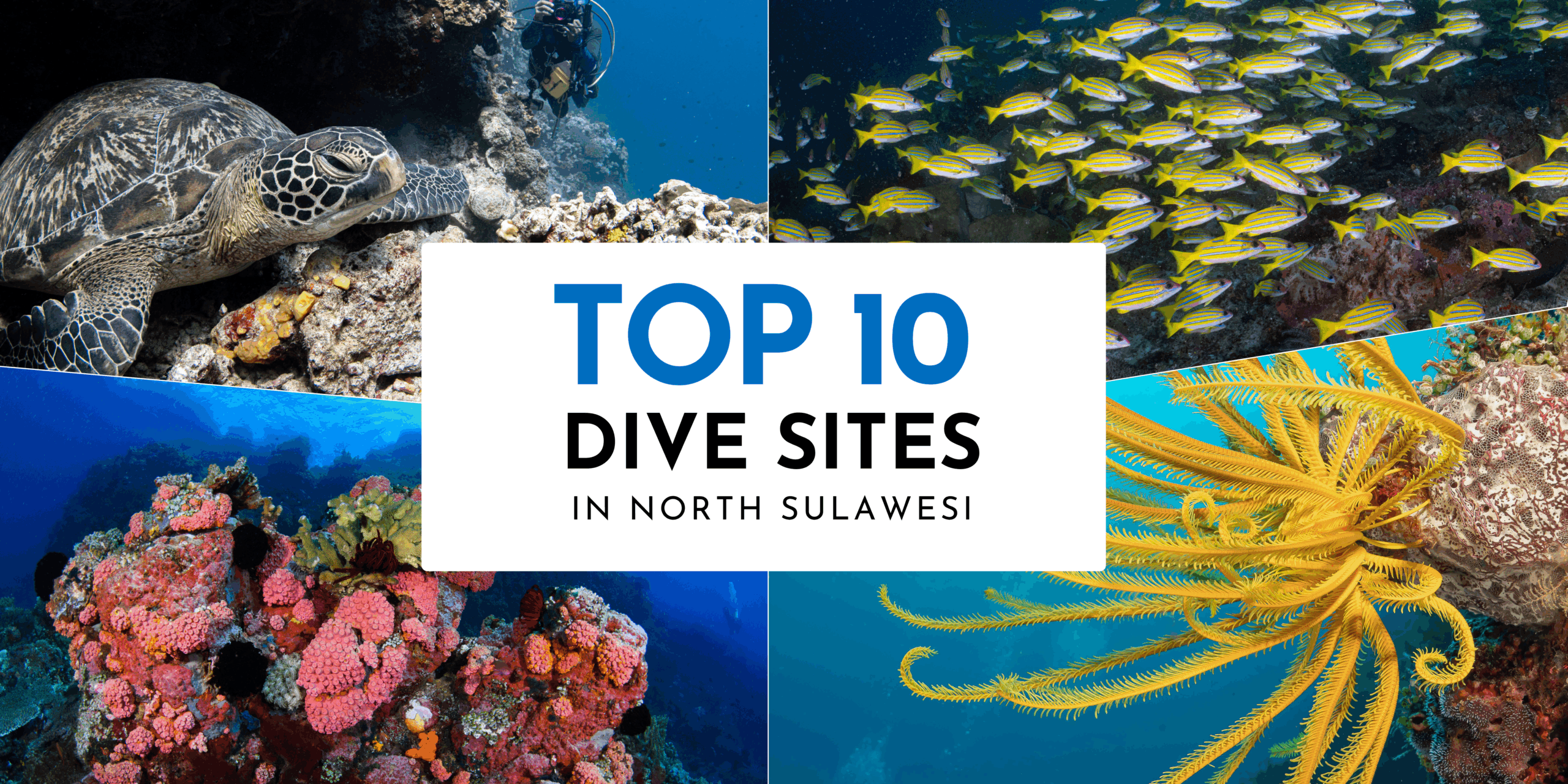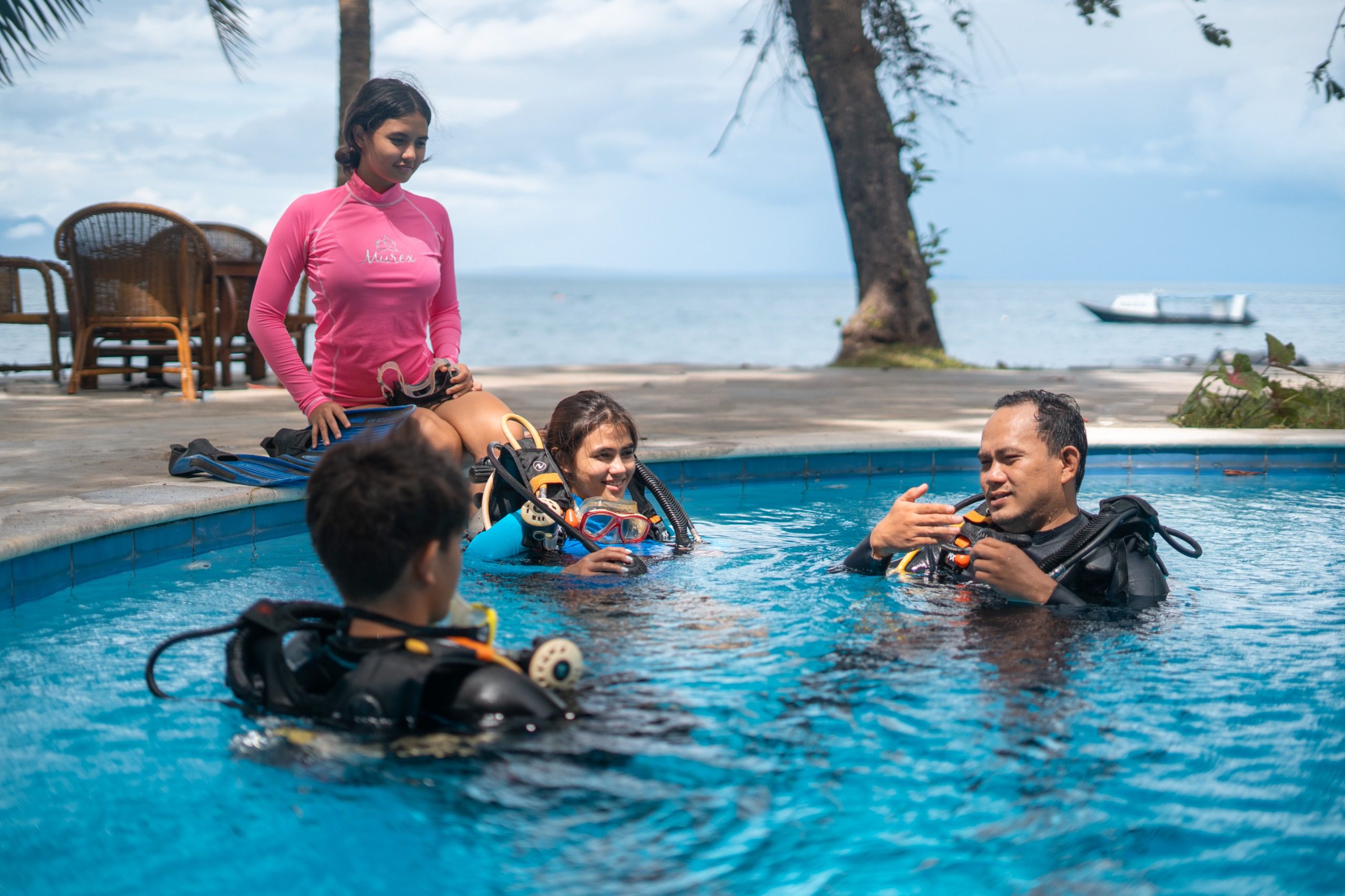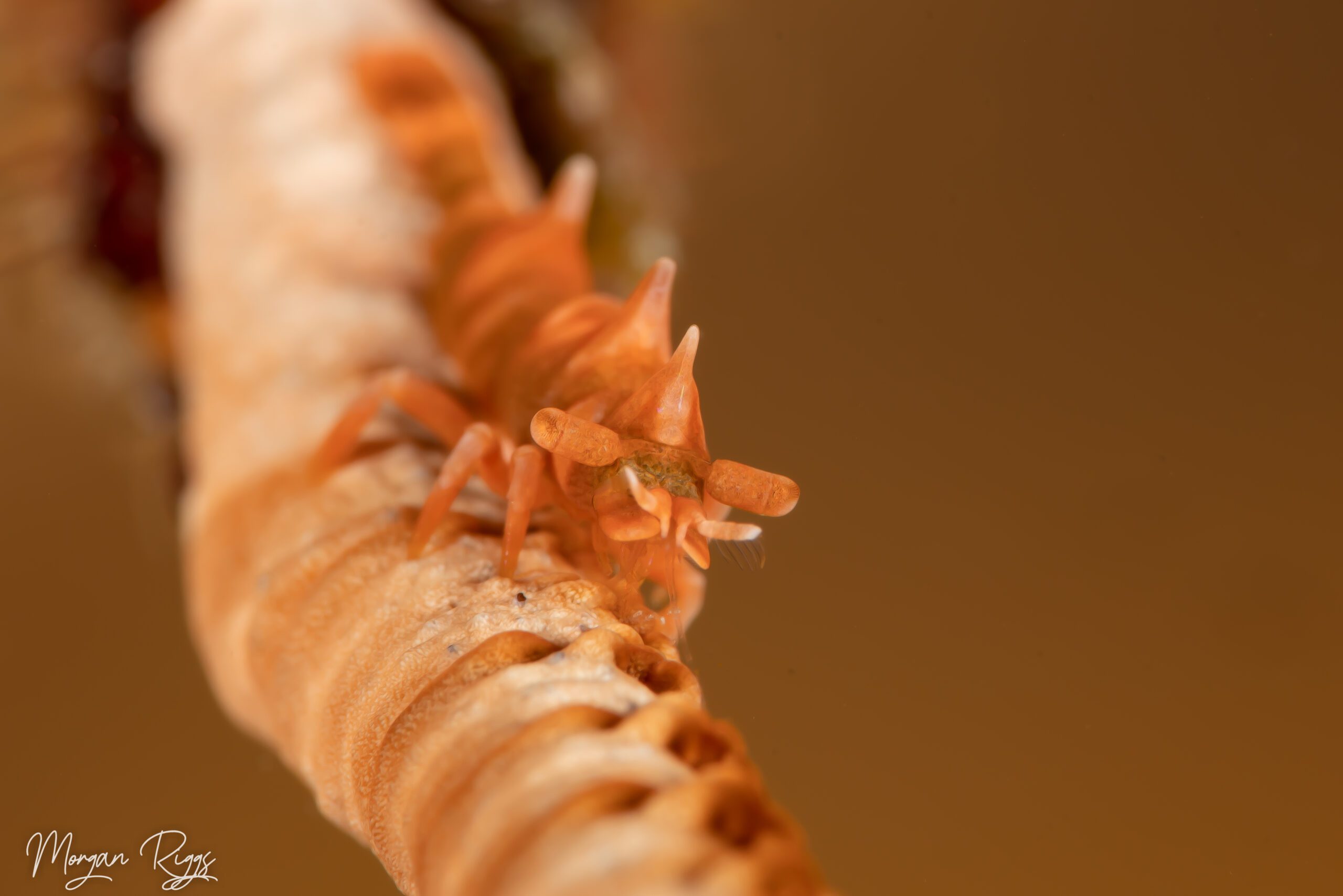
Exploring the Dazzling Diversity of Sulawesi’s Shrimp Species
Shrimp are known for their intricate patterns, vibrant colors, and unique behavior. These small but mighty creatures are a favorite of divers and underwater photographers alike. Our guide takes a closer look at the different species of Sulawesi shrimp found in the waters around Murex Resorts.
We’ll explore their habitat, behavior, and role in the marine ecosystem. Join us as we dive into the world of North Sulawesi’s unusual shrimp species and discover their beauty and importance to our oceans.
Unusual Sulawesi Shrimp Species
TIGER SHRIMP (PHYLLOGNATHIA CERATOPHTHALMUS)
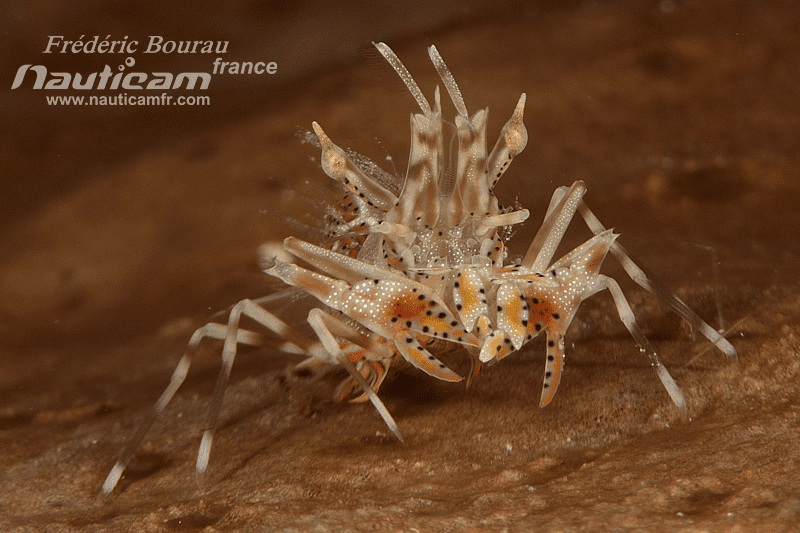
Tiger Stripes in the Tropics
The Tiger Shrimp is a very rare species of shrimp that we are very lucky to have here in North Sulawesi. Macro photographers find this species, only found in the Indo-West Pacific Ocean region, a real treat to capture.
Its body is a pale white to translucent shade and is decorated with exquisite orange and blue markings. This species of crustaceans only grows up to 2cm. We find it in shallow reef areas, often close to coral rubble and/or sponges.
Where to Find Tiger Shrimp in North Sulawesi
This is a rare shrimp so it can be difficult to guarantee a sighting. The dive sites where we have the most luck finding this shrimp include Jahir 2 and the House Reef in Lembeh, Tanjung Kelapa in Manado and Tiga Batu in Bangka.
DRAGON SHRIMP (MIROPANDALUS HARDINGI)
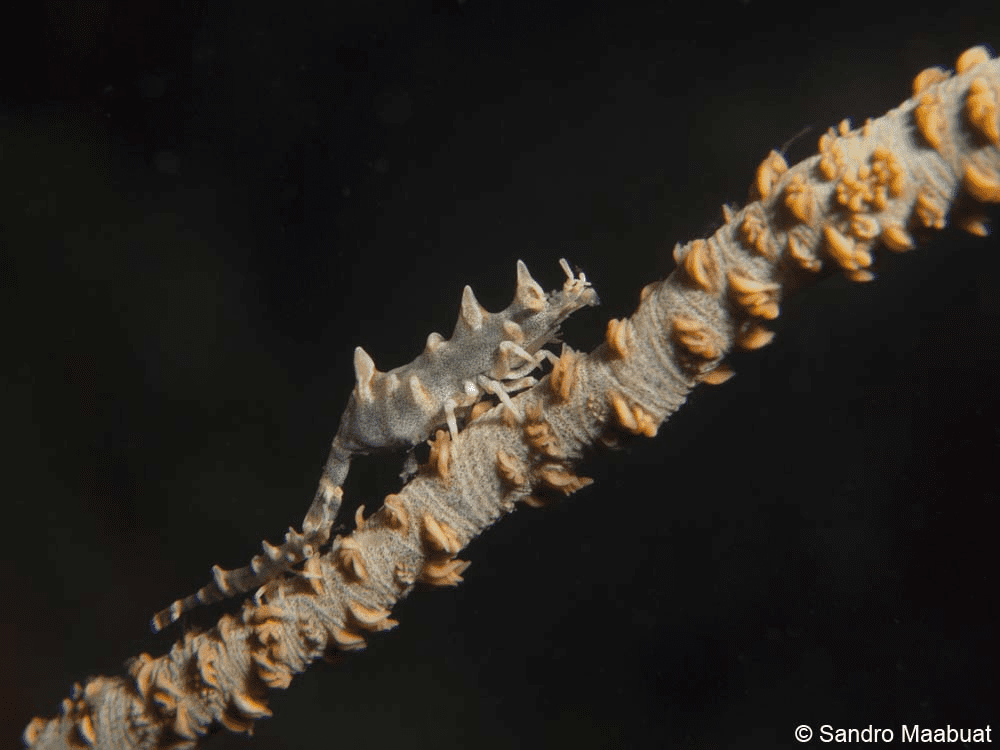
Exploring the Dragon Shrimp
This tiny shrimp only grows up to 2cm and it is commensal with black corals/whip corals. It has a very distinctive body shape with large tooth-like spines along the center of its back (almost like a miniature dinosaur).
It has numerous color variations which range from green, to white or black. Their color depends on the color of their whip or green coral host. Therefore, the trick to finding this species is to carefully study every whip coral from tip to root and from all angles!
Where to Find Dragon Shrimp in North Sulawesi
Find these fascinating creatures year-round at any dive site with whip or black corals. We recommend Nudi Retreat in Lembeh, Murex House Reef in Manado and Batu Gosok in Bangka.
WHIP CORAL SHRIMPS (DASYCARIS ZANZIBARICA)

The Symbiotic Life of Whip Coral Shrimp
Whip coral shrimps live in corals of the order Antipatharia, namely black corals and whip corals. This species of shrimp is often found in pairs with females being twice as big as the male, but still only growing to up to 1.5cm.
The whip coral shrimp has color variations from white to red and green depending on the color of the whip coral host (to which it will match almost identically). Moreover, this shrimp is a relatively common find and we see it all year round at depths from 3 – 40 meters.
Where to Find Whip Coral Shrimp in North Sulawesi
Whip coral shrimps can be found at all three House Reefs (Manado, Bangka and Lembeh) as well as other sites which feature whip and black corals.
BUMBLEBEE SHRIMP (GNATHOPHYLLUM AMRICANUM)
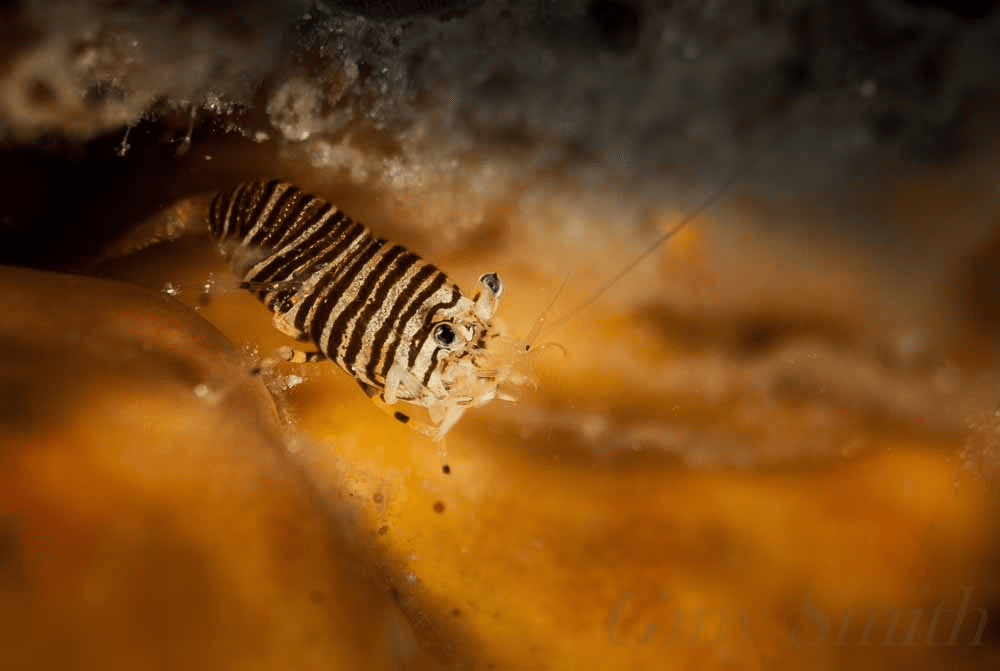
The Bumblebee Shrimp’s Striking Beauty
The Bumblebee shrimp is a very rare species of shrimp and one that our Dive Guides love to find. It is a very rare species rarely seen in pairs and known for its solitary nature. We mainly find the bumblebee shrimp on echinoderms such as sea cucumbers, sea stars and sea urchins.
With a short rostrum, this species displays a banded body in a series of white and black or tan lines. It has orange markings on the tail and orange markings with blue highlights on its chelipeds (the first leg/claw arm). This shrimp grows up to 2.5cm. Due to the rarity of the bumblebee shrimp, it is a sought after species by underwater photographers.
Where to Find Bumblebee Shrimp in North Sulawesi
Hairball sites in Lembeh, Sabora in Bangka and Bulo in Manado.
SKELETON SHRIMP (CAPRELLID SP.)
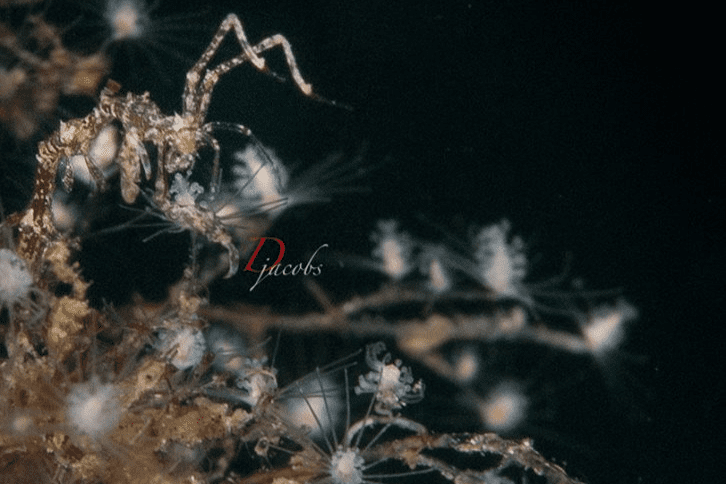
The Camouflaged Skeleton Shrimp
Despite their small size, skeleton shrimp are frequently mistaken for algae. Interestingly, they are often found in large numbers on gorgonian sea fans, soft corals, hydroids and algae. Due to their mostly transparent and often colored (orange, purple, or spotted) bodies, skeleton shrimp are very difficult to spot.
This species of shrimp grows to 1.5cm. To protect their young from the predatory nature of male skeleton shrimp known to feed on juveniles, females carry their offspring on their shoulders. Furthermore, we have sightings of skeleton shrimp on a regular basis all year round, mainly at depths of up to 20 meters.
Where to Find Skeleton Shrimp in North Sulawesi
The best dive sites for spotting skeleton shrimp are Batu Merah and Air Prang in Lembeh, the House Reef in Manado and Sampiri in Bangka.
Encounter the Enchanting Sulawesi Shrimp on Your Diving Adventure
Want to embark on your own adventure and encounter these remarkable creatures? Look no further than our top dive site!
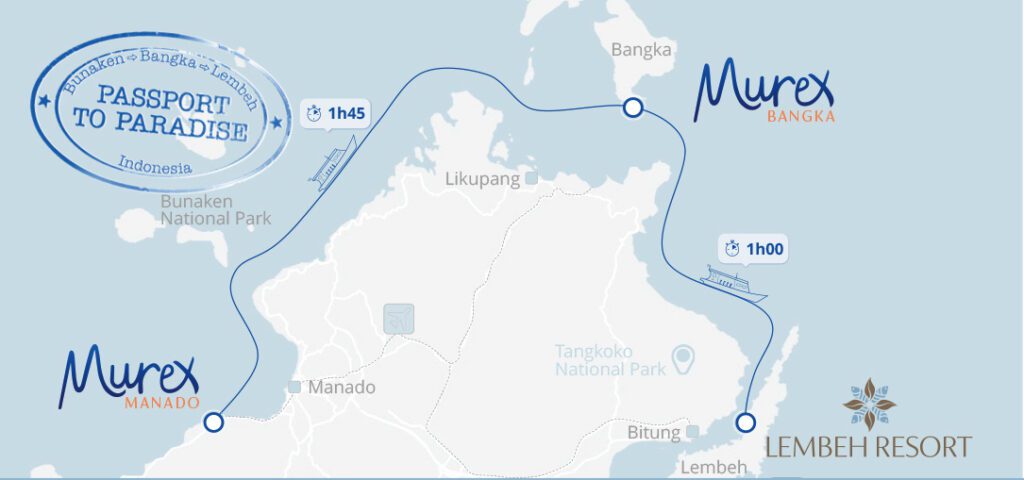
Three distinct destinations brought together by Passport to Paradise
At our dive center, we offer the “Passport to Paradise” package. This designed to take you on an incredible journey through three diverse locations: Bangka, Bunaken, and Lembeh.
Explore vibrant coral reefs, encounter a kaleidoscope of colorful fish, and discover the hidden wonders of the deep with our experienced guides. So, pack your bags and dive into the world of Paradise!
Contact us today for more information or to book your stay: reservations@murexresorts.com.


